Hey there, fellow food enthusiasts! Are you tired of your pots not heating evenly on your electric stove, resulting in burnt or undercooked meals? Well, look no further! Today, I am here to share with you my top 9 ideas for the best cooking pots specifically designed to work perfectly with your electric stove. Whether you’re a beginner or a seasoned cook, these pots are sure to elevate your culinary skills and make cooking a breeze. So, grab a cup of coffee and get ready to learn about the most fantastic cooking pots that will take your cooking game to the next level!
Non-Stick Cast Iron Dutch Oven
With this Non-Stick Cast Iron Dutch Oven, you are about to see a revolution in electric stove cooking pots! With the combination of convenience and heat retention properties of non-stick cookware and cast iron, this innovative and attractive idea aims to revolutionize your cooking experience. Cooking pots specifically designed for electric stoves can sometimes be hard to find, but this non-stick cast iron option has got you covered. Now, let’s delve into some useful tips and tricks for using these cooking pots with your electric stove.
1. Optimal Heat Distribution
To ensure even cooking, it’s essential to preheat your non-stick cast iron Dutch oven slowly and steadily. Start with low to medium heat and allow the pot to gradually come to temperature. This method ensures that the heat is evenly distributed throughout the pot.
2. Seasoning
Prior to the first use and periodically thereafter, season the non-stick coating of your cast iron Dutch oven to prevent food from sticking. To do this, apply a thin layer of cooking oil or fat to the interior surface and heat it for some time. This process creates a natural non-stick barrier, making cooking and cleaning a breeze.
3. Wooden or Silicone Utensils
When using your non-stick cast iron Dutch oven, opt for wooden or silicone utensils instead of metal ones. Metal utensils can scratch or damage the non-stick coating, reducing its effectiveness and lifespan. Wooden or silicone utensils are gentle on the surface and ensure its longevity.
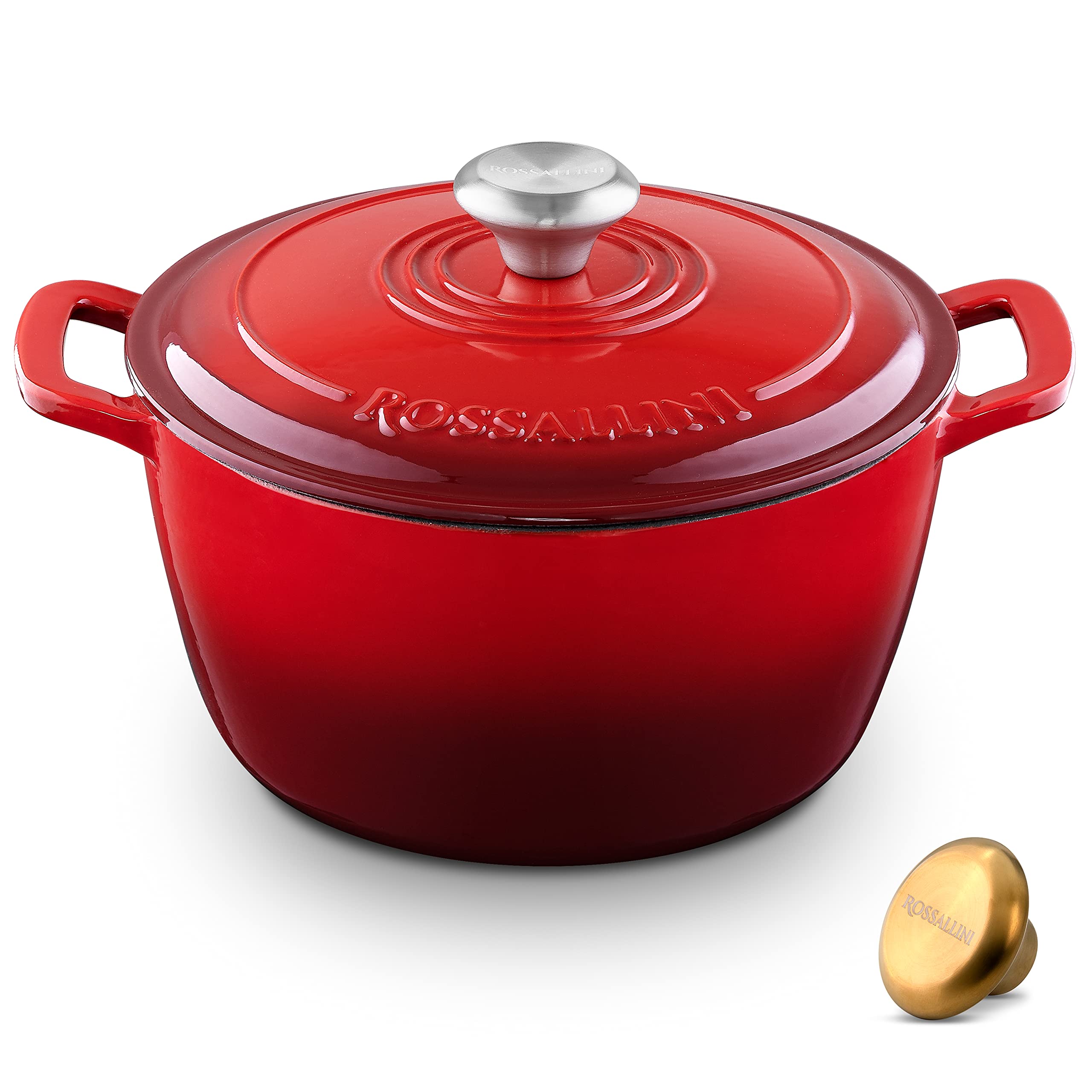
4. Avoid High Heat
While cast iron is known for its excellent heat retention, it’s crucial to avoid using high heat settings with non-stick cookware. Excessive heat can damage the non-stick coating, leading to peeling or flaking. Stick to low or medium heat settings for best results.
5. Cleaning and Maintenance
After each use, allow the non-stick cast iron Dutch oven to cool down before washing it with warm, soapy water. Avoid using abrasive scrubbers or harsh cleaning agents that may damage the non-stick surface. Gently scrub any food residue with a soft sponge or cloth. Remember to dry the pot thoroughly to prevent rust.
6. Storage
To maintain the non-stick coating and overall quality of your cast iron Dutch oven, it’s important to store it properly. Avoid stacking heavy pots on top of each other, as this can lead to chipping or scratching. If space allows, store it in a single layer or use protective padding between the pots to prevent damage.
The Non-Stick Cast Iron Dutch Oven for electric stoves is an innovative solution that combines the best of both worlds. With its excellent heat retention and easy-to-clean non-stick surface, it offers a convenient and enjoyable cooking experience. So, upgrade your cooking pots and embrace this creative idea for your electric stove recipes!
Stainless Steel Multi-Pot
The idea of a Stainless Steel Multi-Pot specifically designed for cooking pots on electric stoves is innovative and appealing. With the growing popularity of electric stoves, this concept addresses the need for a versatile and efficient cooking pot that can maximize the benefits of this type of stove. In this article, we will explore some tips and tricks on how to make the most out of this idea, focusing on keyword “cooking pots for electric stoves.”
1. Optimal Heat Distribution
The first tip when using a multi-pot on an electric stove is to ensure it is made of high-quality, stainless steel material. Stainless steel is known for its excellent heat conductivity, allowing for even heat distribution across the pot’s surface. This ensures that your food cooks consistently and prevents hot spots that can lead to uneven cooking.
2. Versatility in Size and Capacity
Invest in a Stainless Steel Multi-Pot that comes with different sizes and capacities. This will allow you to adjust the pot according to your cooking needs, whether you are boiling water for pasta or making a large pot of soup. Ensure that the pot fits securely on the electric stove’s elements for optimal heat transfer.
3. Invest in a Pot with a Thick Bottom
When using a cooking pot on an electric stove, a pot with a thick bottom is essential. This ensures that the heat is retained and distributed evenly throughout the cooking process. The thick base also helps prevent food from sticking or scorching, providing better control over your cooking.
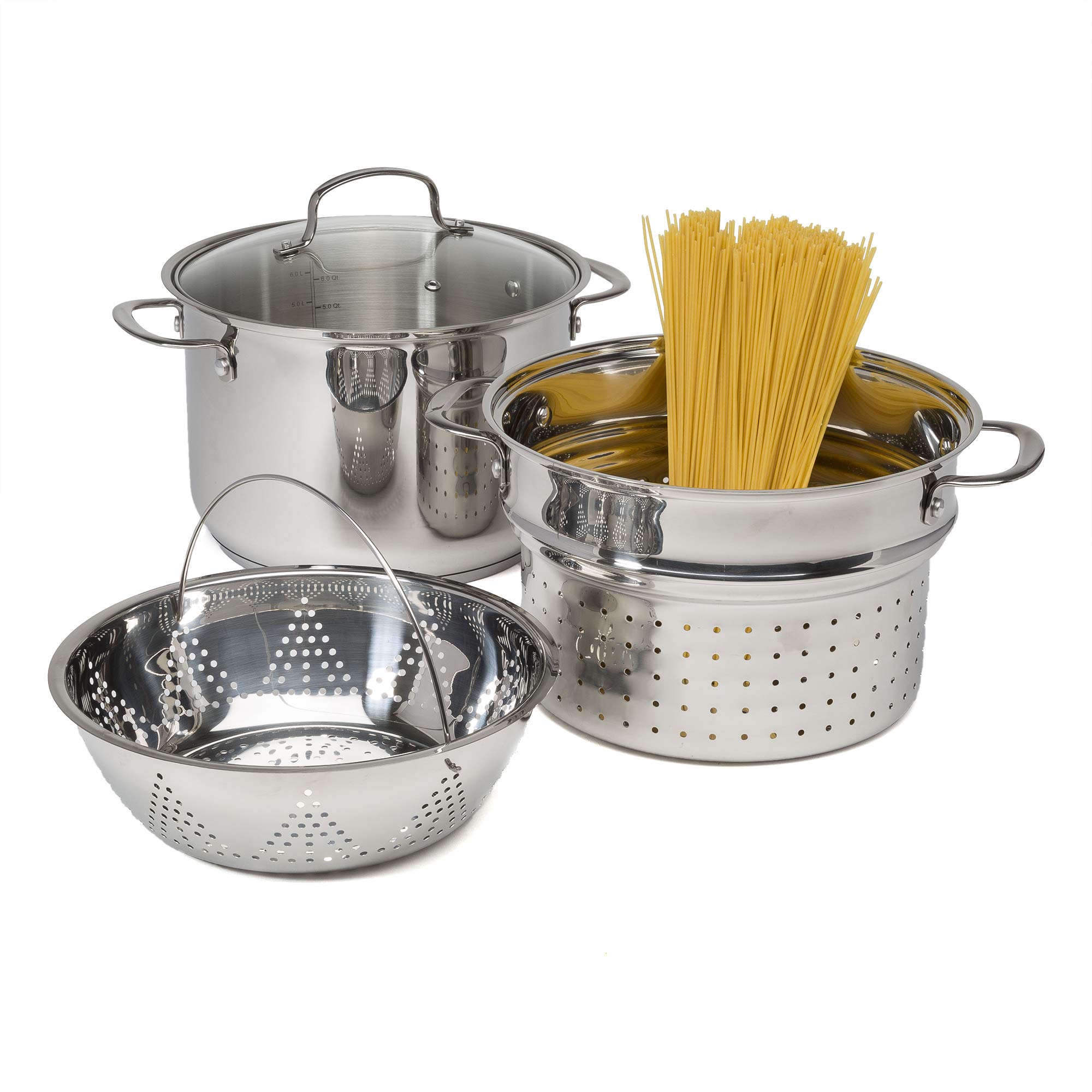
4. Utilize the Induction-Friendly Feature
Look for a Stainless Steel Multi-Pot that is specifically designed to be induction-friendly. Induction cooktops use magnets to generate heat directly in the pot, which results in faster and more efficient heating. Using an induction-friendly multi-pot ensures that you can take full advantage of the electric stove’s capabilities.
5. Easy to Clean and Maintain
Opt for a Stainless Steel Multi-Pot that is dishwasher safe for hassle-free cleaning. Stainless steel is known for its durability and resistance to staining, making it easy to maintain its pristine appearance. Additionally, ensure that the pot has ergonomic handles that stay cool during cooking, allowing for safe handling and comfort.
6. Utilize Pot Accessories
Explore additional pot accessories that can enhance your cooking experience with a Stainless Steel Multi-Pot. Look for steamer inserts, pasta strainers, or dividers that fit the pot, making it even more versatile in preparing different dishes simultaneously.
7. Explore Different Cooking Techniques
With a Stainless Steel Multi-Pot optimized for electric stove use, you can experiment with various cooking techniques. From sautéing to boiling, frying to simmering, this pot allows you to explore culinary flavors and techniques with ease and efficiency.
By following these tips and tricks when using a Stainless Steel Multi-Pot specifically designed for cooking pots on electric stoves, you can elevate your cooking experience and unleash your culinary creativity. Embrace the convenience and versatility of this innovative idea, and enjoy the efficient cooking it provides.
Ceramic-Coated Cookware
Cooking pots for electric stoves are an essential element in every kitchen, and finding the best ones can be a challenge. However, the idea of using ceramic-coated cookware for electric stoves brings a creative and attractive solution to this problem. The ceramic coating offers numerous benefits, such as enhanced durability, non-stick properties, and even heat distribution. If you’re in search of the best cooking pots for your electric stove, here are some tips and tricks to consider:
1. Look for ceramic-coated cookware specifically designed for electric stoves
When shopping for cooking pots, make sure to check if they are compatible with electric stoves. The manufacturers often mention this information on the product packaging or in the product description.
2. Opt for high-quality ceramic coatings
Not all ceramic coatings are created equal. To ensure the longevity and performance of your cookware, choose pots with high-quality ceramic coatings. Look for reputable brands known for their durable and reliable products.
3. Consider the size and capacity
Determine your cooking needs and choose cooking pots that match your requirements. Whether you need a small pot for individual portions or a large one for family meals, select sizes that align with your usual cooking practices.
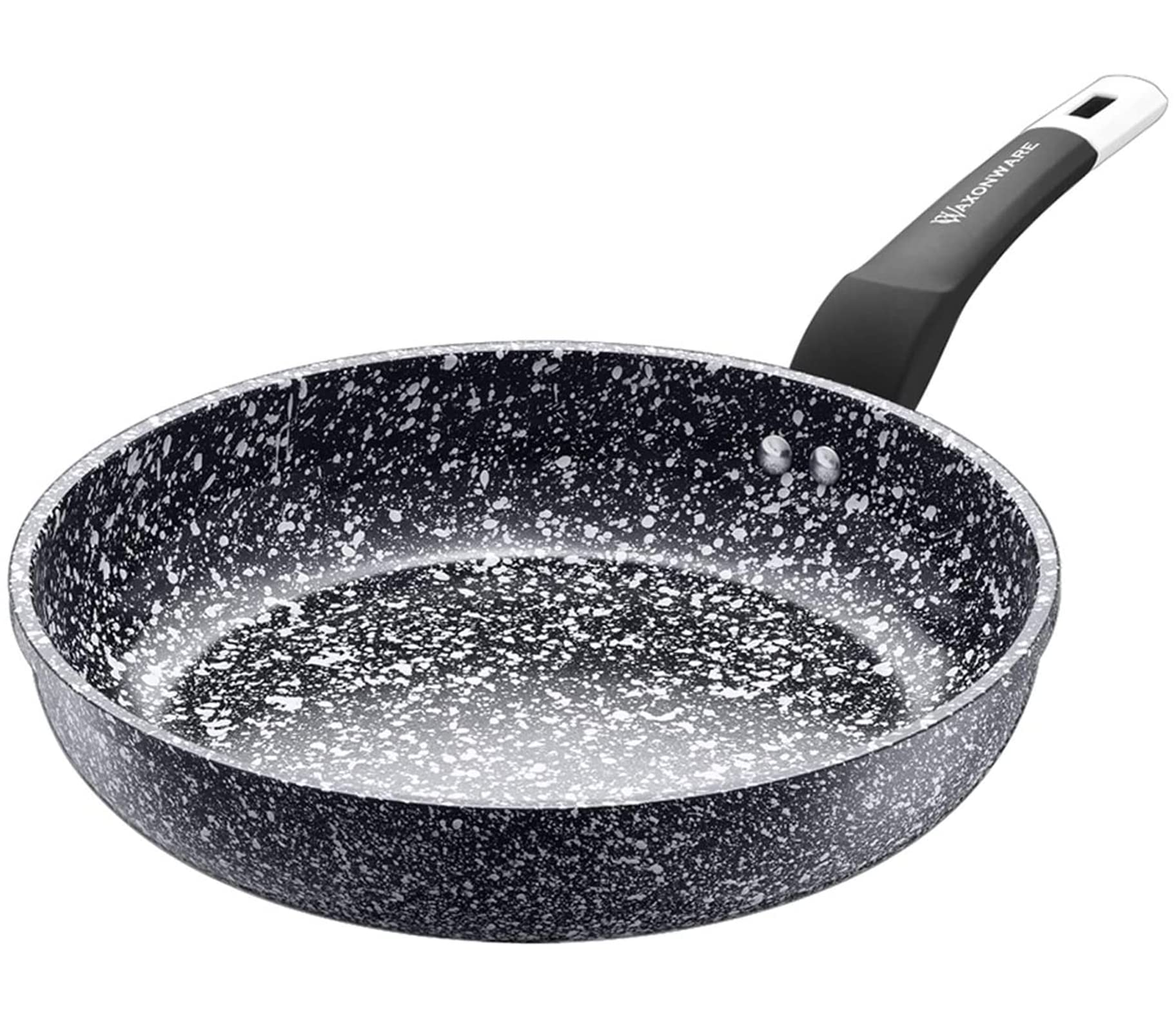
4. Check the handle material and design
The handle of your cooking pot should be heat-resistant and comfortable to grip. Look for pots with ergonomically designed handles that stay cool during cooking. This will ensure safe and easy handling while you’re using your electric stove.
5. Ensure compatibility with different heat levels
Electric stoves have various heat settings, so it’s important to select cooking pots that are suitable for different temperature ranges. Avoid pots that are not versatile enough and may warp or lose their non-stick properties at higher heat levels.
6. Easy maintenance and cleaning
Ceramic-coated cookware usually requires minimal effort to clean, thanks to its non-stick surface. However, read the manufacturer’s instructions for proper care and maintenance to ensure the longevity of your pots. Avoid using abrasive cleaning tools as they can damage the ceramic coating.
7. Look for sets or individual pots
Depending on your kitchen needs, you can opt for a cooking pot set or purchase individual pots separately. Sets offer a variety of sizes and often come with lids, providing flexibility for different recipes and cooking methods.
Finding the best cooking pots for electric stoves doesn’t have to be overwhelming. By considering these tips and tricks and opting for ceramic-coated cookware, you can enhance your cooking experience and enjoy delicious meals with ease on your electric stove.
Anodized Aluminum Stockpot
1. Heat distribution
Anodized aluminum is an excellent choice for cooking pots, especially for electric stoves. The material allows for quick and even heat distribution, ensuring that your food is cooked thoroughly and evenly. This feature is beneficial for electric stoves, as they often have hot spots that can lead to uneven cooking.
2. Non-reactive surface
Another advantage of anodized aluminum is its non-reactive surface. This means that it won’t interact with acidic or alkaline ingredients, preventing any metallic taste or discoloration in your food. This is particularly important for delicate dishes that require precise flavors.
3. Lightweight and durable
Anodized aluminum is known for its lightweight nature, making it easy to handle while cooking. Despite its lightweight property, it is still a highly durable material that can withstand daily use and repeated exposure to high temperatures without warping or denting. This makes it perfect for everyday cooking on electric stoves.
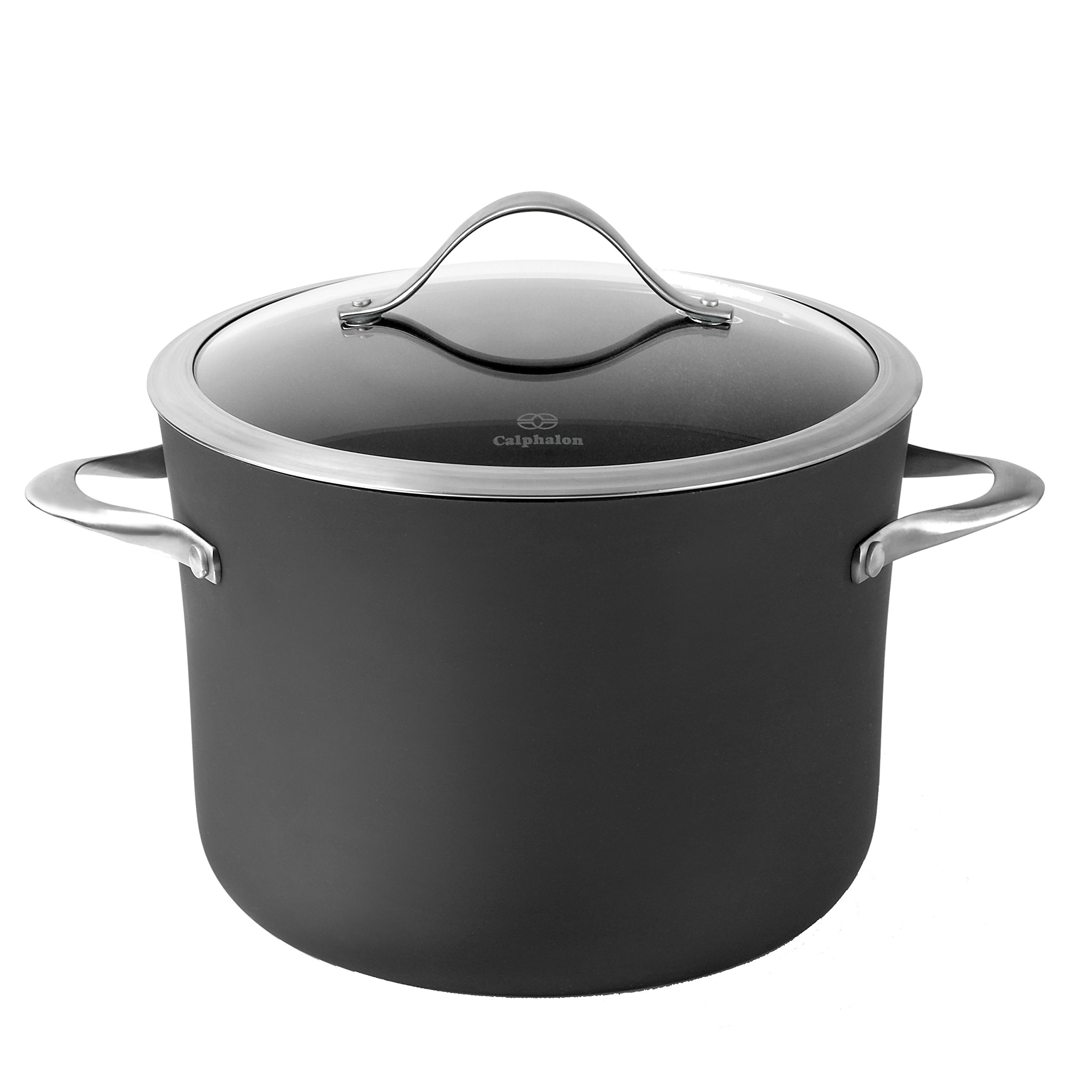
4. Non-stick properties
Anodized aluminum stockpots often come with a naturally non-stick interior coating. This feature allows for easy food release and ensures effortless cleanup after cooking. It also eliminates the necessity of adding excess oil or butter, promoting healthier cooking options.
5. Versatility
Anodized aluminum stockpots are suitable for a wide range of cooking methods on electric stoves, from boiling and simmering to sautéing and stewing. This versatility makes it a valuable addition to any kitchen, as you can prepare various dishes without needing multiple pots.
6. Heat retention
Anodized aluminum has excellent heat retention properties, allowing you to keep your food warm for longer periods, even after removing it from the electric stove. This is particularly useful for serving large meals or when preparing multiple dishes simultaneously.
7. Easy maintenance
Maintaining an anodized aluminum stockpot for electric stove cooking is a breeze. Most models are dishwasher safe, making cleanup effortless. However, hand washing with mild detergent is recommended to prolong its lifespan. Additionally, avoid using abrasive scrubbers or harsh chemicals that can damage the anodized coating.
8. Compatibility with induction cooktops
An added advantage of anodized aluminum stockpots is their compatibility with induction cooktops. This means that if you have an electric stove with induction capabilities, you can use the same stockpot without needing additional cookware.
Incorporating an anodized aluminum stockpot for your electric stove cooking needs offers a range of benefits, including superior heat distribution, non-reactive surface, lightweight durability, non-stick features, versatility, heat retention, easy maintenance, and compatibility with induction cooktops. Consider investing in one to enhance your cooking experience and elevate your culinary skills.
Copper Saucepan
The idea of a Copper Saucepan for cooking pots on an electric stove is a truly creative and attractive concept. Copper has long been revered for its excellent heat conductivity and uniform distribution, making it an ideal material for cooking. With its timeless elegance and the ability to enhance the flavors of food, a Copper Saucepan offers a stunning addition to any kitchen. In this article, we will share some tips and tricks for using and maintaining a Copper Saucepan, focusing on cooking pots for electric stoves.
1. Opt for a thick copper construction
When selecting a Copper Saucepan for your electric stove, choose one with a thick copper base and walls. This ensures optimal heat distribution and minimizes hot spots, guaranteeing even cooking.
2. Use low to medium heat settings
Copper conducts heat incredibly efficiently, so it’s important to use low to medium heat settings on your electric stove. High heat can result in scorching or burning the food, as copper responds quickly to changes in temperature.
3. Preheat the pan before cooking
To maximize the benefits of your Copper Saucepan, allow it to preheat on the electric stove before adding any ingredients. This helps maintain a steady temperature and enables the copper to work its magic.
4. Avoid using metal utensils
Although copper is a durable material, it can scratch easily. To preserve the beauty and integrity of your Copper Saucepan, use wooden or silicone utensils when cooking. They are gentle on the pan’s surface and prevent any potential damage.
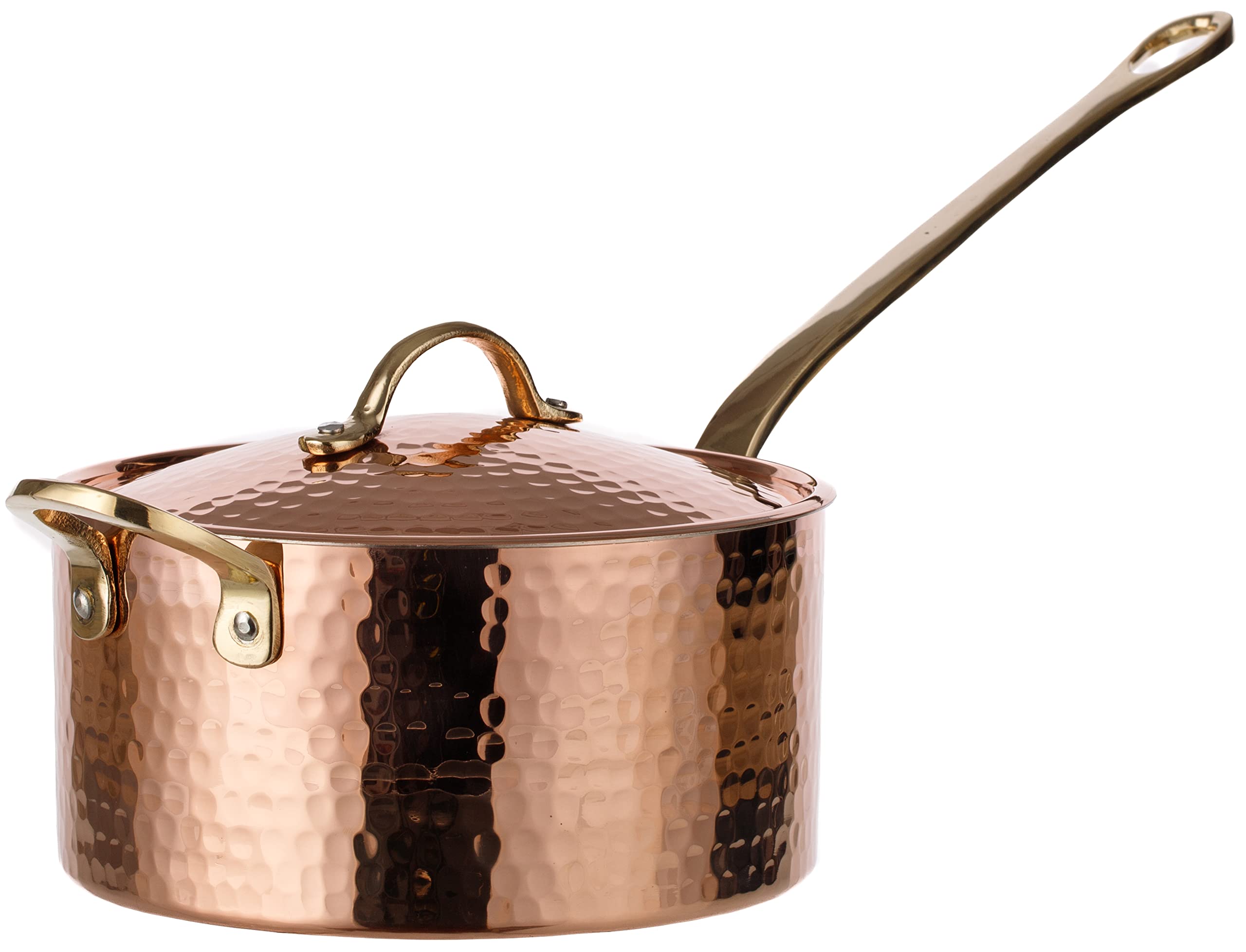
5. Clean with gentle care
Copper tends to tarnish over time, but it’s easy to restore its shine. After use, let the pan cool down before cleaning it. Avoid harsh cleaning agents and abrasive scrubbers when washing your Copper Saucepan. Instead, gently hand wash it with a mild dish soap and a soft sponge. Regularly polishing the exterior with a copper cleaner will help maintain its lustrous appearance.
6. Store with care
When not in use, ensure your Copper Saucepan is stored properly. Avoid stacking other heavy cookware on top of it to prevent damage. To prevent tarnishing, consider using a protective cloth or bag specifically designed for copper cookware.
7. Retinning
Over time, the tin lining on copper cookware may wear off. If you notice signs of copper exposure, it’s recommended to have your Copper Saucepan professionally retinned. This process involves recoating the interior with a fresh layer of tin, restoring its functionality and maintaining the safe cooking surface.
By following these tips and tricks, you can fully enjoy the benefits of cooking with a Copper Saucepan on your electric stove. Its exceptional heat conductivity, stunning appearance, and ability to elevate culinary creations make it a valuable addition to any kitchen. Experiment with various recipes and savor the wonders of copper cooking pots!
Enameled Cast Iron Skillet
You should keep in mind a few tips and tricks when using enameled cast iron skillets on electric stoves for optimal cooking results. By sticking to keywords, here are some helpful pointers:
1. Properly pre-heat the skillet
Before starting any cooking, make sure to pre-heat the skillet on the electric stove for a few minutes. This allows for even heat distribution and helps in preventing food from sticking to the bottom.
2. Use low to medium heat settings
Enameled cast iron is an excellent heat conductor, so it is important to avoid using high heat settings on the electric stove. Low to medium heat is generally sufficient for most cooking tasks and helps in preventing food from burning or scorching.
3. Use oven mitts or handle covers
The handles of enameled cast iron skillets can get extremely hot during cooking. To avoid burns, always use oven mitts or handle covers when handling the skillet. It is also advisable to place a trivet or heat-resistant pad under the skillet when serving food directly from the stove to protect countertops or table surfaces.
4. Avoid drastic temperature changes
Enameled cast iron performs best when treated gently. Avoid subjecting the skillet to drastic temperature changes, such as transferring it directly from a hot stove to a cold surface. Let the skillet cool down gradually or use a cooling rack to prevent any potential damage to the enamel coating.
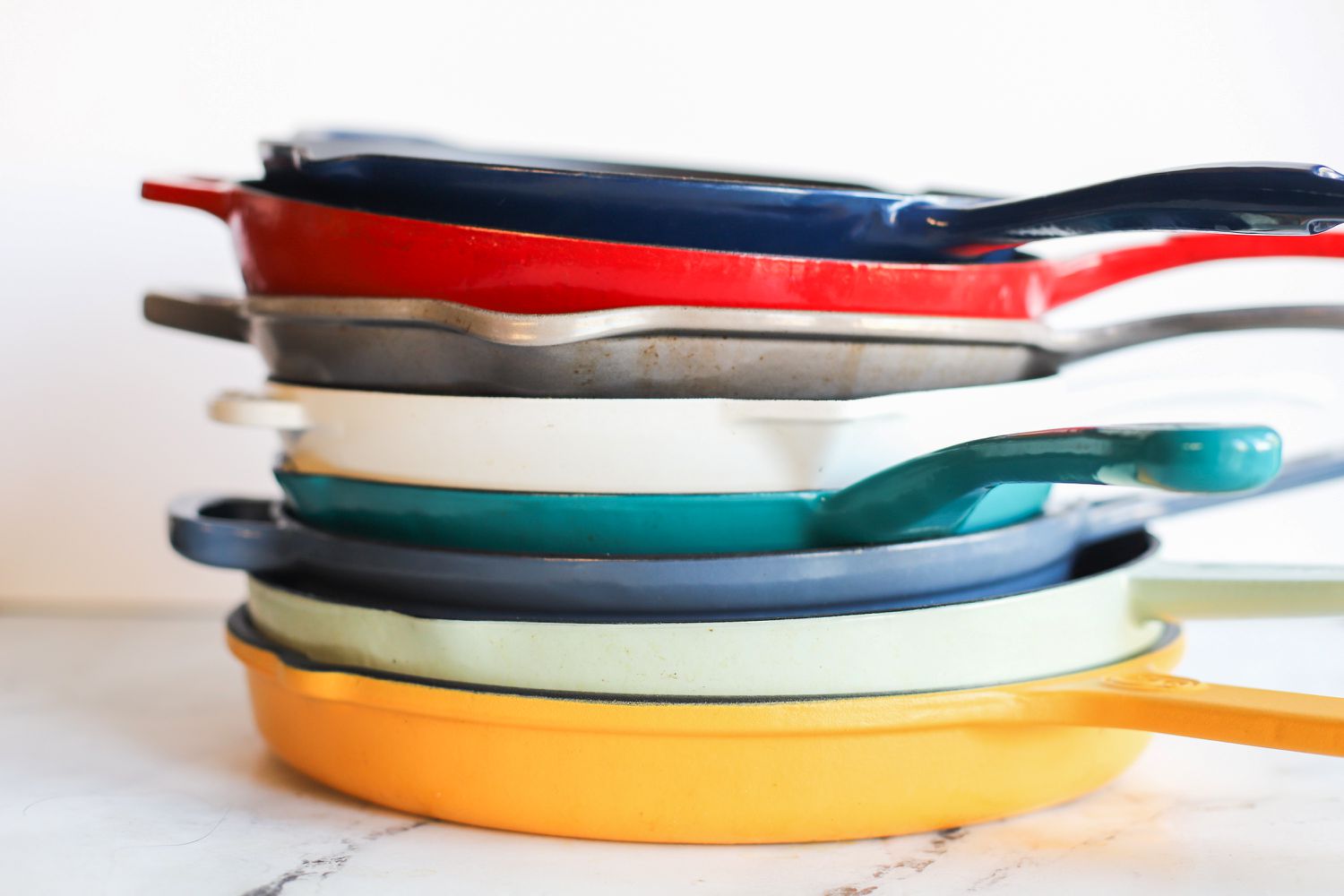
5. Regularly season the skillet
Although enameled cast iron skillets do not require regular seasoning like traditional cast iron skillets, it is still a good idea to apply a thin layer of cooking oil or fat after each use. This helps in preventing food from sticking and maintains the skillet’s non-stick properties.
6. Minimize metal utensil usage
To avoid potentially damaging the enamel coating, it is best to use wooden, silicone, or nylon utensils when cooking with an enameled cast iron skillet. Metal utensils can scratch or chip the enamel, compromising its non-stick properties.
7. Clean with care
After cooking with the enameled cast iron skillet, allow it to cool down before washing. Use warm, soapy water and a soft sponge or cloth to gently clean the skillet. Avoid using abrasive cleaners or scrubbing pads, as they can damage the enamel. Once clean, dry the skillet thoroughly to prevent any moisture from causing rust.
By following these tips and tricks, cooking with an enameled cast iron skillet on an electric stove becomes a hassle-free and enjoyable experience. Experiment with various recipes and cooking techniques to enhance your culinary skills with the versatility of this kitchen essential.
Compatible Glass Cookware
Tips and Tricks for Using Compatible Glass Cookware on Electric Stoves
1. Choose the Right Cookware
When selecting glass cookware for use on an electric stove, make sure it is compatible with your cooktop. Look for cookware that is specifically labeled as suitable for electric stoves and can withstand high heat.
2. Avoid Extreme Temperature Changes
Glass cookware can be sensitive to extreme temperature changes, so take care not to subject it to sudden shifts in heat. For example, if you remove a hot glass pot from the stove, avoid placing it directly on a cold surface or holding it under cold water.
3. Preheat Gradually
To prevent thermal shock, it’s best to preheat glass cookware gradually. Start with low to medium heat and gradually increase the temperature if needed. This helps to evenly distribute the heat and reduce the risk of the glass cracking.
4. Use a Diffuser
If you find that your glass cookware is not heating evenly on your electric stove, consider using a heat diffuser. This device sits between the stove’s heating element and the cookware, distributing heat more evenly and reducing the chances of hot spots.
5. Avoid Dropping or Hitting
Glass cookware is susceptible to cracks and shattering if dropped or hit against a hard surface. Always handle glass pots and pans with care, particularly when placing them on or removing them from the stove. It’s also advisable to avoid using metal utensils that could scratch or chip the glass.
6. Clean with Caution
When cleaning glass cookware, avoid using harsh scrubbers or abrasive cleaners that can scratch the surface. Stick to gentle dish soaps and soft sponges or cloths. If stubborn stains or burnt food residue are present, consider soaking the cookware in warm, soapy water before gently scrubbing.
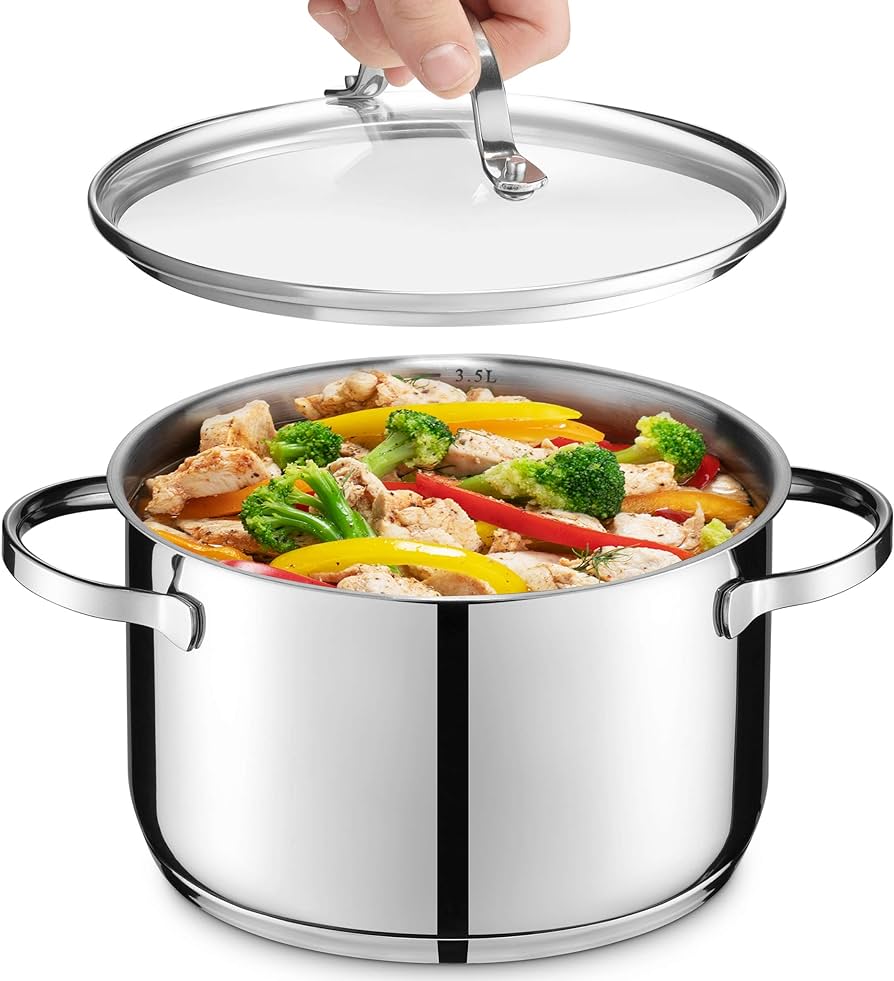
7. Allow for Cooling Time
After cooking with glass cookware on an electric stove, allow it to cool down naturally before cleaning or submerging it in water. Placing hot glass pots or pans directly in cold water can cause thermal shock and potentially lead to cracking or breakage.
8. Avoid Empty Glass Cookware on High Heat
Glass cookware should never be heated on an electric stove without any contents in it. Empty cookware can cause the glass to overheat and potentially crack or shatter. Always ensure there is liquid, food, or oil in the cookware before applying heat.
9. Don’t Stack Hot Glass Cookware
When removing glass cookware from the stove, avoid immediately stacking it with other hot cookware or placing it on a cold surface. Allow the cookware to cool down individually to prevent any potential damage.
10. Inspect Regularly
Periodically inspect your glass cookware for any signs of cracks, scratches, or chips. Small damages can sometimes lead to bigger issues, so it’s crucial to replace any compromised cookware to ensure safe and effective cooking.
By following these tips and tricks, you can make the most of your compatible glass cookware on an electric stove, ensuring safe and enjoyable cooking experiences. Remember to always handle your glass cookware with care and check for compatibility before use.
Enameled Steel Dutch Oven
Tips and Tricks for Cooking Pots for Electric Stove: Enameled Steel Dutch Oven
1. Heat Distribution
One advantage of using an enameled steel Dutch oven on an electric stove is its excellent heat distribution. The heavy-gauge steel used in its construction allows for even heat distribution, ensuring that your food cooks evenly without any hot spots. This is especially beneficial for slow-cooking or braising dishes.
2. Versatility
Enameled steel Dutch ovens are incredibly versatile cooking pots for electric stoves. They can be used for various cooking methods such as boiling, searing, sautéing, simmering, and baking. Whether you’re making soups, stews, pot roasts, or even baking bread, the enameled steel Dutch oven can handle it all.
3. Non-Reactive and Non-Stick Surface
Enameled steel Dutch ovens usually come with a non-reactive and non-stick enamel coating. This makes them ideal for cooking acidic foods like tomatoes or citrus-based dishes. The non-stick surface also makes cleaning a breeze, preventing food from sticking to the pot’s surface and allowing for easy removal of any residues.
4. Retains and Distributes Heat
The heavy construction of enameled steel Dutch ovens helps retain heat for a longer duration. This means that your food will stay warm even after you remove it from the heat source, making it perfect for serving at the table. Additionally, the evenly distributed heat ensures that your food stays hot throughout the cooking process.
5. Durability
Enameled steel Dutch ovens are known for their durability. The steel construction makes them sturdy and resistant to warping or denting. The enamel coating also adds an extra layer of protection, making the pot less prone to scratching or chipping. With proper care, an enameled steel Dutch oven can last for many years, making it a worthwhile investment for your kitchen.
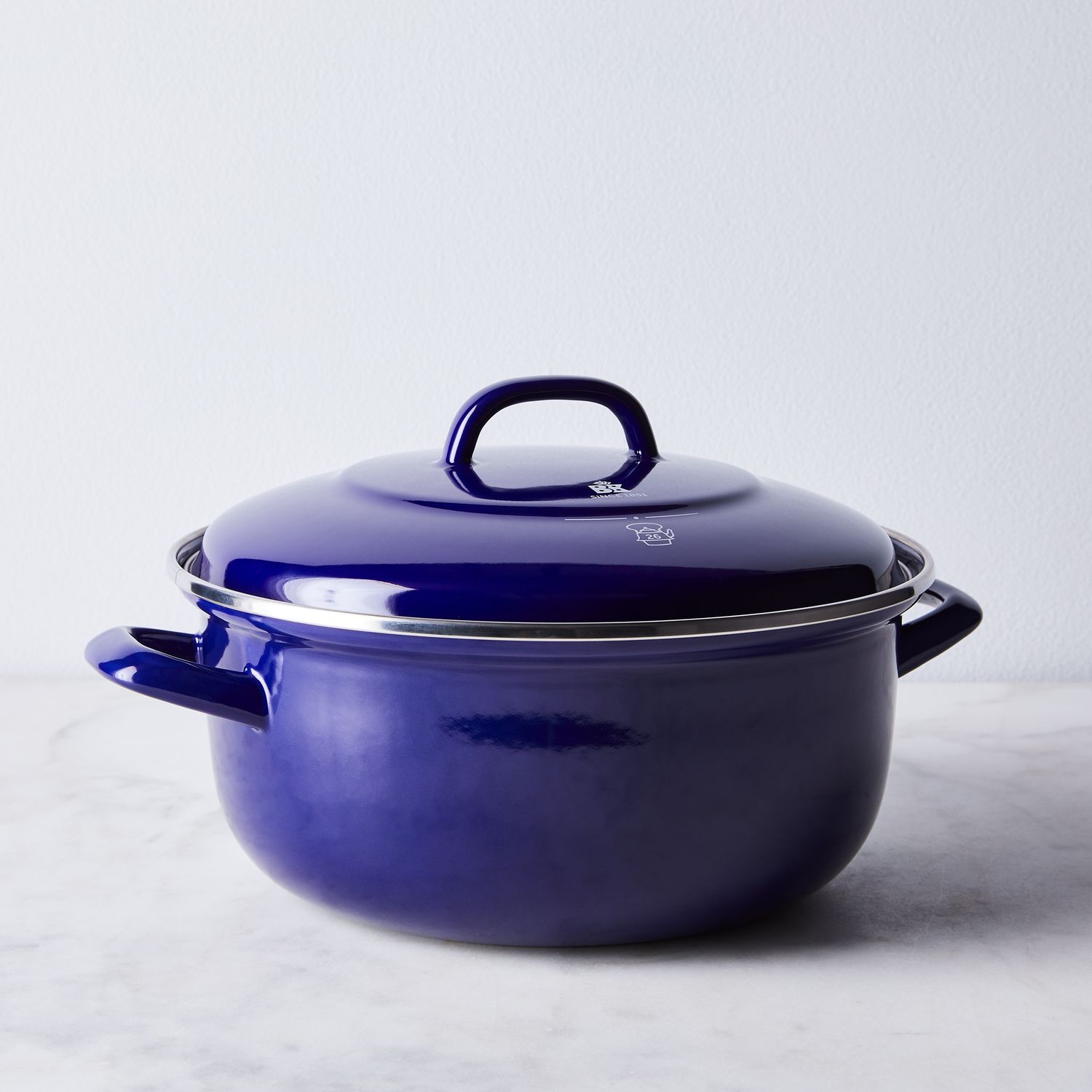
6. Easy to Clean
Cleaning an enameled steel Dutch oven is relatively simple. The non-stick enamel surface prevents food from sticking, and most stains can be easily removed with a gentle scrub. However, avoid using abrasive cleaning pads or harsh chemicals that could damage the enamel coating. Instead, opt for mild dish soap and warm water, along with a soft sponge or cloth.
7. Oven Safe
Enameled steel Dutch ovens are typically oven safe, which adds to their versatility. You can start your cooking on the stovetop and then transfer the pot directly into the oven without worrying about damaging the pot. This feature allows you to easily transition from browning or searing to slow cooking or finishing dishes in the oven.
8. Suitable for All Cooktops
Another advantage of enameled steel Dutch ovens is their compatibility with various types of cooktops, not just electric stoves. Whether you have a gas stove, induction cooktop, or a ceramic glass surface, you can confidently use an enameled steel Dutch oven without any compatibility concerns.
9. Lid Design
Pay attention to the Dutch oven’s lid when choosing one for an electric stove. Look for a lid with a tight-fitting design that helps to trap heat and retain moisture during cooking. This will ensure that your dishes come out flavorful and tender, thanks to the optimal heat retention.
10. Size Considerations
Keep in mind the size of the enameled steel Dutch oven when selecting one for your electric stove. Consider the available space on your stovetop and the quantity of food you typically cook. A Dutch oven that fits well on the stove without overcrowding ensures efficient heat distribution and easier handling.
By following these tips and tricks, you can make the most out of an enameled steel Dutch oven on your electric stove. Explore various recipes and unleash your culinary creativity with this versatile cooking pot.
Cast Iron Griddle Pan
1. Preheat the griddle pan
Before using the cast iron griddle pan, it is important to preheat it properly. Place it on the electric stove and set the heat to medium-low. Allow the pan to gradually heat up for about 5-10 minutes. This is essential to ensure even cooking and prevent food from sticking to the pan.
2. Season the griddle pan
Cast iron griddle pans need to be seasoned before their first use and regularly thereafter to maintain their non-stick surface. To season the pan, wash it thoroughly to remove any factory residue, dry it completely, and then rub a thin layer of cooking oil all over the surface. Heat the pan for about an hour at a high temperature, and repeat this process a few times to enhance its non-stick properties.
3. Use the right cooking utensils
When cooking on a cast iron griddle pan, it is crucial to use utensils that are specifically designed for use with cast iron. Avoid using metal utensils that can scratch the pan’s surface and instead opt for wooden or silicone utensils that are gentle on the cast iron and won’t damage the seasoning.
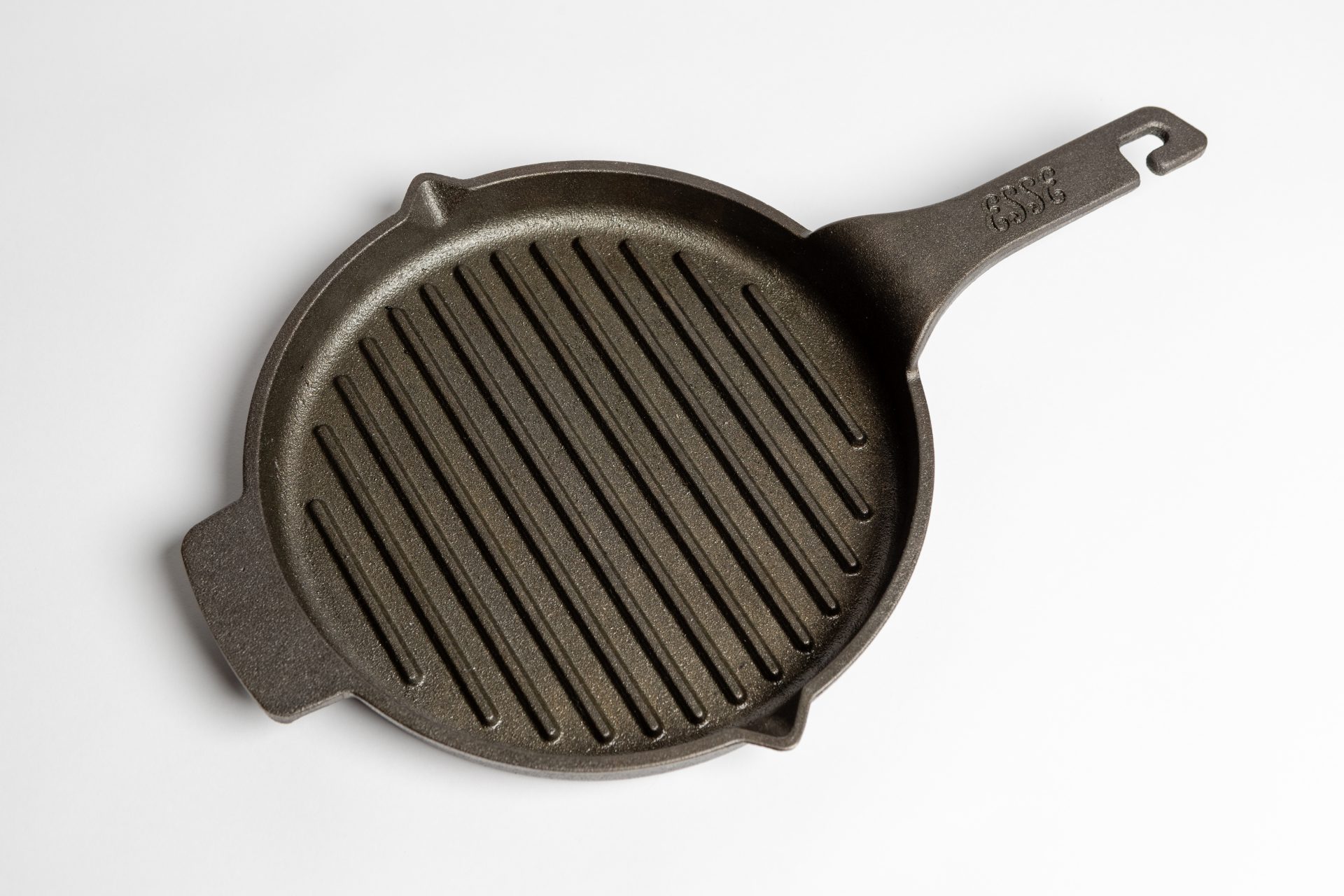
4. Maintain proper heat control
Electric stoves can heat up quickly, but they also take some time to cool down. To prevent overcooking or burning your food, monitor the heat closely and adjust it as needed. Use low to medium heat for most cooking tasks on the cast iron griddle pan. If the pan gets too hot, remove it from the heat source for a while to cool down before continuing to cook.
5. Avoid drastic temperature changes
Cast iron is known for its excellent heat retention, but it can be susceptible to thermal shock. Avoid subjecting the pan to drastic temperature changes, such as transferring it directly from a high heat source to a cold surface. Allow the pan to cool down gradually before cleaning or storing to prevent cracking or warping.
6. Clean the griddle pan with care
After cooking, allow the cast iron griddle pan to cool down completely before cleaning it. Avoid using harsh soaps or abrasive scrubbers that can strip away the seasoning. Instead, use a gentle dish soap, warm water, and a soft sponge or nylon brush to remove any food residue. Dry the pan thoroughly to prevent rusting and apply a thin coat of oil to maintain the seasoning.
7. Store the griddle pan properly
To prevent any damage and maintain the seasoning of your cast iron griddle pan, store it in a dry place where it won’t be exposed to moisture. Consider stacking paper towels or placing a cloth between multiple cast iron pans to avoid scratching or chipping.
Using a cast iron griddle pan on an electric stove can be a fantastic way to achieve restaurant-quality cooking at home. By following these tips and tricks, you can optimize your cooking experience and enjoy perfectly cooked meals every time.
Types of Electric Stoves
Electric stove burners operate on a straightforward principle: they contain a resistor that transforms electrical energy into heat. This means that an electric burner is capable of heating any material it comes into contact with.
Electric stoves can come with either an exposed coil or a smooth glass-ceramic surface with the coil situated beneath it. In terms of performance, there isn’t a significant distinction between the two types, and you don’t necessarily require different cookware for them. However, it’s worth noting that glass tops can be susceptible to cracking and scratching, so it’s essential to exercise caution when using rough-bottomed or heavy cookware, with cast iron being an example that falls into both categories.
Smooth Top:
Smooth top electric ranges, which feature a glass-ceramic surface, have become the most prevalent choice among electric stoves. They are easier to maintain cleanliness compared to coil burners, and they offer a sleek and modern appearance. Nevertheless, they tend to be pricier and may have a slower heating process because the coil is located beneath the smooth surface.
While the glass ceramic top is relatively durable, it can be vulnerable to cracking when heavy objects are placed on it with excessive force, and it can also get scratched if you drag cookware with rough undersides across it.
Coil:
Coil electric ranges, on the other hand, may appear somewhat old-fashioned in their design but operate based on the same principle as smooth tops. They are typically more cost-effective. Since the coil is exposed, they tend to heat up more quickly. The advantage here is that you can visually observe the coil turning red when it’s hot, serving as a helpful cue that may help prevent accidental burns.
Final Words
So, when it comes to cooking pots for electric stoves, there are numerous options to select from, each with its own unique advantages. While the Stainless Steel Multi-Pot offers durability and versatility, the Non-Stick Cast Iron Dutch Oven is ideal for slow cooking and even heat distribution. Ceramic-Coated Cookware provides a non-toxic cooking surface, and the Anodized Aluminum Stockpot ensures efficient heat conduction. Finally, the Copper Saucepan offers excellent heat control and a stylish addition to any kitchen. By investing in the best cooking pots for your electric stove, you can elevate your culinary skills and create delicious meals effortlessly. Whether you are a beginner or an experienced chef, these cooking pots will undoubtedly enhance your cooking experience and greatly improve your life in the kitchen.
